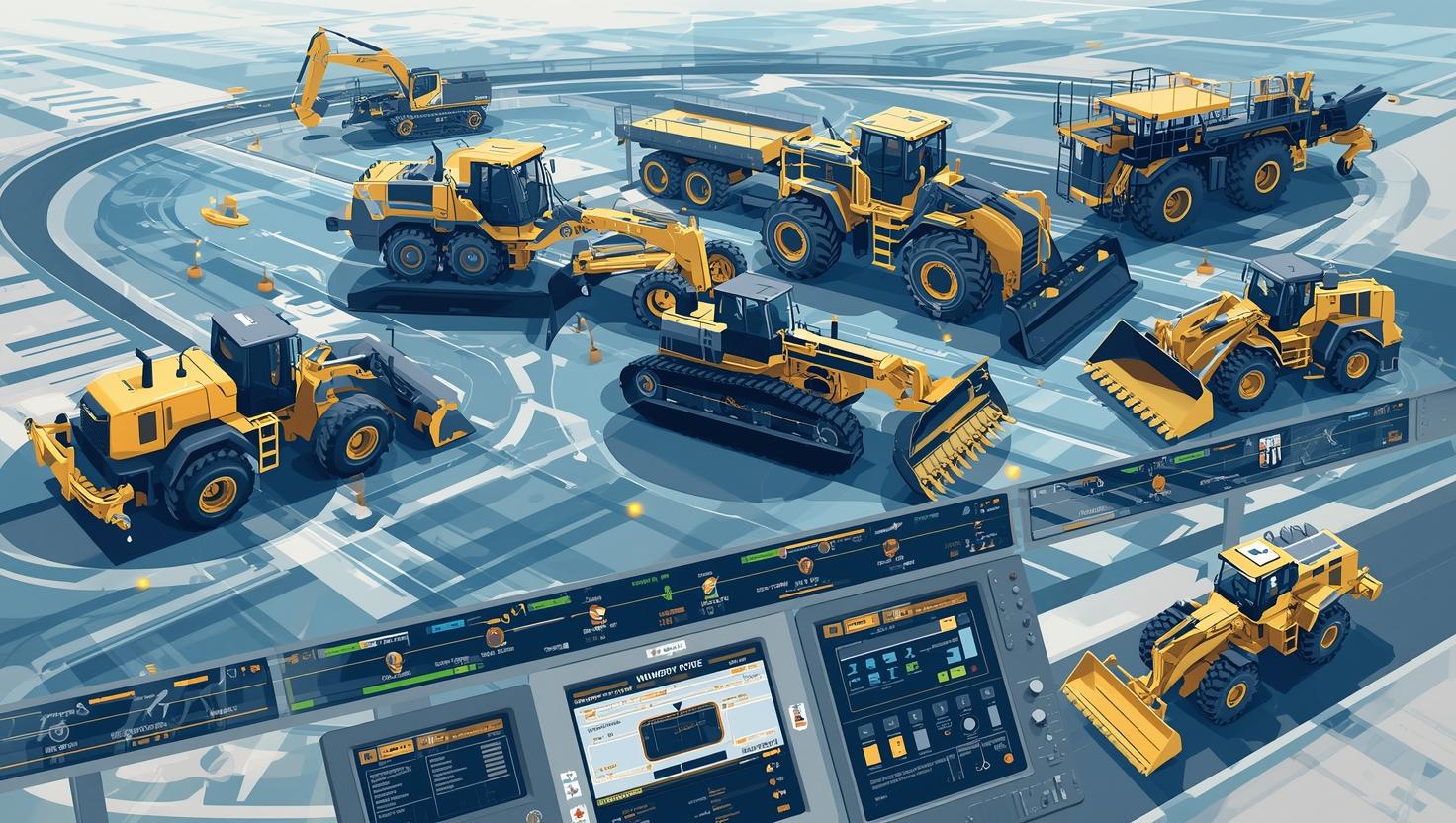In the era of Industry 4.0 and smart infrastructure development, precision, automation, and efficiency are no longer optional—they are imperative. At the heart of this transformation lies the machine control system market, which is witnessing robust growth as GNSS (Global Navigation Satellite System), GPS, and IoT technologies become deeply integrated into construction, agriculture, and mining equipment.
Machine control systems have evolved from basic leveling tools to intelligent, sensor-driven platforms that automate heavy machinery and optimize job site performance. As global infrastructure projects scale and labor shortages persist, industries are rapidly turning to machine control solutions to enhance productivity, reduce waste, and improve safety.
Understanding Machine Control Systems
Machine control systems are integrated technologies that guide and automate construction and industrial machinery such as excavators, graders, bulldozers, pavers, and agricultural equipment. These systems use a combination of GNSS, GPS, lasers, sensors, and software to deliver real-time data and ensure machines operate with extreme accuracy.
Modern systems can adjust blade position, depth, slope, and alignment without the need for manual intervention. This not only reduces dependency on skilled operators but also minimizes human error, fuel consumption, and material costs.
Download PDF Brochure @ https://www.marketsandmarkets.com/pdfdownloadNew.asp?id=62579001

GNSS and GPS: Driving Accuracy and Efficiency
The integration of GNSS and GPS into machine control systems has revolutionized how projects are executed. These satellite-based navigation systems provide centimeter-level accuracy, allowing operators to follow exact design specifications in real time. Whether it’s grading a roadbed or laying a pipeline, GNSS-enabled machines can work efficiently without constant surveying.
GNSS-based systems are particularly valuable in large-scale infrastructure projects where maintaining consistent precision across long distances is critical. Dual-frequency GNSS receivers and RTK (Real-Time Kinematic) correction technologies further enhance positioning accuracy, ensuring repeatable, reliable results in the field.
IoT Integration: Enabling Smart, Connected Equipment
The role of the Internet of Things (IoT) in the machine control system market cannot be overstated. IoT enables equipment to be remotely monitored, diagnosed, and updated, turning traditional heavy machinery into smart, connected assets.
Through real-time data analytics, operators and project managers gain insights into equipment health, usage patterns, fuel efficiency, and maintenance needs. This predictive capability reduces downtime, extends machinery life, and ensures optimal utilization.
Furthermore, IoT connectivity allows seamless integration with Building Information Modeling (BIM), fleet management platforms, and cloud-based construction software, promoting collaboration and transparency across all project stakeholders.
Key Market Applications: Construction, Agriculture, and Mining
Construction
In the construction sector, machine control systems are being rapidly adopted in road building, excavation, grading, and paving. Urbanization and government investments in smart infrastructure and transportation networks are accelerating demand. The technology helps contractors meet tight deadlines while adhering to strict design and regulatory requirements.
Agriculture
In agriculture, precision farming is revolutionizing how fields are cultivated. Machine control systems with GPS and GNSS help in accurate planting, spraying, and harvesting, optimizing yield and reducing resource use. With climate change and sustainability in focus, farmers are embracing automation to ensure consistency and reduce environmental impact.
Mining and Earthmoving
Mining operations benefit from the precision of machine control systems in activities such as drilling, loading, and grading. Autonomous and semi-autonomous vehicles improve safety and reduce labor dependency in hazardous environments, while also increasing throughput and operational consistency.
Market Growth and Outlook
The global machine control system industry is projected to reach USD 6.03 billion in 2025 and USD 8.93 billion by 2030, registering a CAGR of 8.2%:
- The global push for infrastructure development
- Rising labor costs and operator shortages
- Increasing emphasis on safety and sustainability
- Advancements in positioning technologies (GNSS, GPS, RTK)
- Widespread IoT and telematics adoption
Leading market players such as Trimble Inc., Topcon Corporation, Leica Geosystems (Hexagon AB), MOBA Mobile Automation, and Hemisphere GNSS are at the forefront, developing robust, scalable systems tailored to industry-specific needs.
Challenges and Considerations
Despite the strong growth trajectory, the machine control system market faces several challenges. High initial investment costs can be a barrier for small and mid-sized companies. The need for skilled operators and technicians to install and manage advanced systems can also slow adoption in certain regions.
Moreover, GNSS signals can be obstructed by terrain or urban structures, requiring hybrid solutions with backup sensors such as lasers or inertial systems. Ensuring data security in connected machinery is another growing concern as cyber threats increase in industrial environments.
Conclusion: A Smarter, More Precise Future
As industries prioritize precision, automation, and digital integration, the machine control system market is evolving into a cornerstone of modern construction, agriculture, and mining operations. The convergence of GNSS, GPS, and IoT is unlocking new levels of efficiency, safety, and control across the value chain.
For companies investing in infrastructure and earthmoving projects, adopting machine control technology is no longer a competitive advantage—it’s a strategic necessity. With continuous innovation and rising global demand, the market is well-positioned for sustained, long-term growth.
FAQ
Q1: What is a machine control system?
A machine control system is a technology solution used in heavy machinery to enhance precision, efficiency, and automation during operations such as grading, excavation, and paving. These systems utilize GNSS/GPS, sensors, lasers, and software to provide real-time data and automate the operation of construction, agricultural, and mining equipment.
Q2: How does GNSS or GPS improve machine control performance?
GNSS (Global Navigation Satellite Systems) and GPS offer real-time location tracking with high accuracy. When integrated into machine control systems, these technologies enable equipment to follow exact design parameters, reduce rework, and minimize material waste. This is especially critical for large-scale projects that require precise leveling and grading.
Q3: What is driving the growth of the machine control system market?
The market is growing due to several key factors:
-
The global push for infrastructure development
-
Rising adoption of automation and smart construction technologies
-
Shortage of skilled labor in construction and agriculture
-
Increased focus on cost efficiency, safety, and productivity
-
Integration of IoT and telematics into heavy machinery
